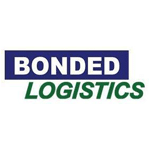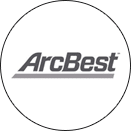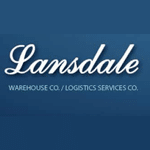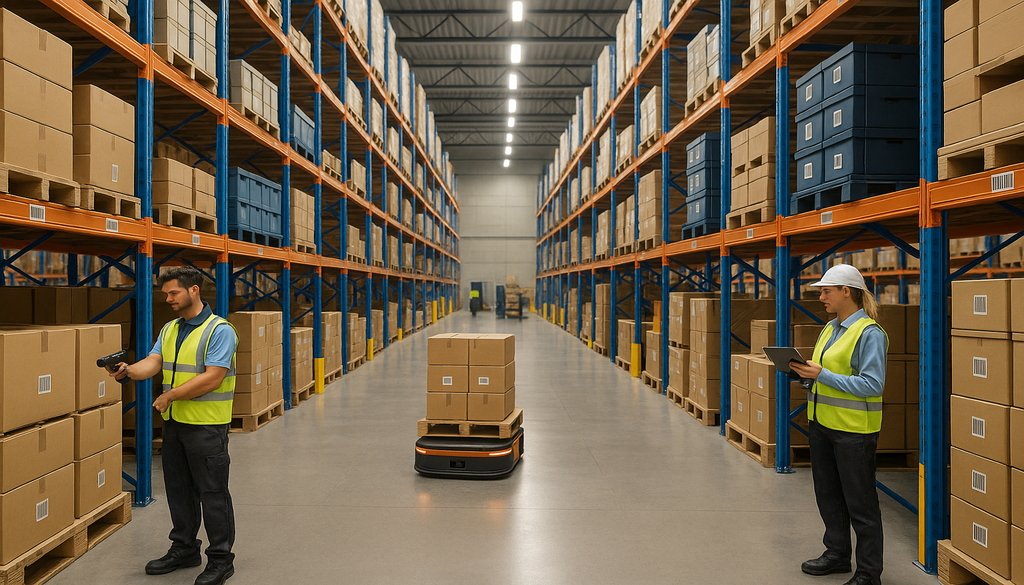How Warehouse License Plate Features Improve B2B Fulfillment Efficiency
Understanding Warehouse License Plate Features
![]()
In today’s fast-paced logistics environment, warehouse license plate (LP) features represent a fundamental yet sophisticated tracking mechanism that significantly enhances inventory management processes. At its core, a warehouse license plate is a unique identifier assigned to a logistical unit such as a pallet, tote, or container that contains multiple individual items or SKUs. This identifier, typically presented as a barcode or RFID tag, functions as a single reference point that warehouse management systems use to track and manage the movement and storage of goods throughout the facility. Rather than scanning each individual item within a container, the license plate allows operators to process entire units with a single scan, dramatically reducing handling time and minimizing potential for errors during receiving, putaway, picking, and shipping operations.
Warehouse license plates function within warehouse management systems (WMS) as a critical linking mechanism between physical goods and digital inventory records. When implemented effectively, the WMS maintains a comprehensive database that associates each license plate with detailed information about its contents, including quantity, SKU numbers, lot numbers, expiration dates, and quality status. This association enables real-time visibility of inventory movement as license plates are scanned at various checkpoints throughout the warehouse. The system architecture typically involves several integrated components: barcode or RFID scanners that capture license plate data, mobile devices that display relevant information to operators, and the central WMS database that processes transactions and updates inventory records accordingly. This sophisticated ecosystem facilitates not only basic tracking but also enables advanced functionalities such as directed putaway, cross-docking, and dynamic slotting optimization based on real-time operational data.
The technological foundation of license plate functionality within modern WMS platforms represents a significant advancement over traditional paper-based tracking methods. When a license plate is scanned, the WMS instantly retrieves and displays all associated information, allowing warehouse staff to verify contents without physically opening containers or counting items. This capability proves particularly valuable during receiving processes where incoming shipments can be quickly validated against purchase orders, and during outbound operations where order accuracy can be confirmed before shipping. Moreover, the system maintains a complete historical record of each license plate’s movement, providing valuable data for process analysis, compliance documentation, and inventory reconciliation. This digital trail creates unprecedented visibility into warehouse operations, allowing managers to identify bottlenecks, optimize workflows, and implement continuous improvement initiatives based on concrete operational data rather than assumptions.
The implementation of warehouse license plate functionality typically requires careful planning and system configuration to maximize benefits. Most modern WMS platforms offer license plate capabilities either as core functionality or through additional modules, with varying levels of sophistication and integration options. The setup process involves defining license plate numbering schemes, establishing business rules for license plate generation and management, configuring scanning devices, and training warehouse personnel on proper procedures. While the initial implementation may require significant investment in technology and process changes, the long-term benefits in terms of operational efficiency, inventory accuracy, and data visibility typically deliver substantial return on investment, particularly for operations handling high volumes of similar items or managing complex fulfillment requirements for multiple clients or channels.
The Role of Warehouse License Plates in B2B Fulfillment
B2B fulfillment operations face unique challenges that distinguish them from direct-to-consumer fulfillment, including larger order volumes, complex product assortments, custom packaging requirements, and stringent delivery timelines. Warehouse license plate features address these challenges by providing a sophisticated infrastructure for managing bulk movements efficiently while maintaining granular inventory control. In B2B scenarios, license plates enable warehouse operators to process entire pallets or containers as single units during receiving and shipping, while still maintaining detailed visibility of individual items contained within. This capability proves particularly valuable when managing large wholesale orders that might contain dozens or hundreds of SKUs consolidated onto multiple pallets. By scanning a single license plate rather than each individual item, operators can reduce processing time by up to 80% according to industry benchmarks, while simultaneously improving accuracy by minimizing manual counting and data entry that frequently lead to errors in high-volume environments.
The implementation of license plate functionality delivers measurable efficiency gains across various warehouse processes critical to B2B fulfillment success. During receiving, license plates enable rapid verification of incoming shipments against purchase orders, with studies showing up to 40% reduction in receiving time when properly implemented. In storage operations, license plates facilitate dynamic location management, allowing warehouses to optimize space utilization through flexible slotting strategies rather than fixed location assignments. During order fulfillment, license plates support batch picking operations where multiple orders can be fulfilled simultaneously, with productivity improvements of 25-50% commonly reported in warehouse operations that transition from item-level to license plate-based picking methodologies. Perhaps most significantly, license plates dramatically streamline inventory management by enabling cycle counting without disrupting operations, resulting in inventory accuracy rates exceeding 99% in well-managed facilities, compared to typical accuracy rates of 80-90% in warehouses using traditional inventory methods.

Several compelling case studies illustrate the transformative impact of license plate implementation in B2B fulfillment environments. A leading automotive parts distributor implemented license plate tracking within their regional distribution centers and documented a 32% increase in order processing speed alongside a 68% reduction in shipping errors over a six-month period. The improvement stemmed primarily from the elimination of item-by-item verification during both receiving and shipping processes, allowing staff to confirm order accuracy by scanning license plates rather than counting individual components. Similarly, a pharmaceutical wholesaler leveraged license plate features to streamline their batch tracking processes, achieving full FDA compliance while reducing labor costs associated with inventory management by approximately 22%. The system enabled warehouse staff to locate specific batches instantaneously rather than searching through inventory records or physically inspecting multiple storage locations, significantly enhancing their ability to manage time-sensitive pharmaceutical products with strict traceability requirements.
The financial benefits of warehouse license plate implementation for B2B fulfillment extend beyond operational efficiency to include significant improvements in customer satisfaction and retention. Research indicates that B2B buyers increasingly prioritize fulfillment accuracy and consistency when selecting supply chain partners, with 87% of procurement professionals citing order accuracy as “extremely important” in vendor evaluation processes. By enhancing order accuracy rates through license plate management, distributors and wholesalers can strengthen customer relationships and reduce costly returns processing. Additionally, the improved inventory visibility provided by license plate systems enables more responsive customer service, as staff can quickly confirm product availability and provide accurate delivery estimates based on real-time warehouse data. This enhanced service capability creates a competitive advantage in B2B markets where reliable fulfillment increasingly serves as a key differentiator between otherwise comparable suppliers.
Integrating LP Management with Warehouse Operations
Successful integration of license plate management into existing warehouse operations requires a systematic approach that addresses both technological and procedural aspects of implementation. The initial phase typically involves conducting a comprehensive assessment of current warehouse processes, identifying pain points that license plate functionality could address, and establishing clear objectives for the implementation project. This assessment should examine current receiving, putaway, picking, and shipping workflows to determine how license plates can enhance efficiency without disrupting essential operations. Following this analysis, organizations must select appropriate technology solutions, including barcode or RFID equipment compatible with existing warehouse management systems, mobile devices for warehouse staff, and potentially middleware to facilitate integration between different software platforms. The implementation team should develop a detailed project plan with clearly defined milestones, responsibilities, and contingency measures to address potential challenges during the transition period.
System configuration represents a critical component of the integration process, requiring careful attention to both technical and operational requirements. The configuration phase typically includes establishing license plate numbering schemes that align with organizational needs, defining data structures that will associate license plates with inventory information, creating business rules for license plate generation and management, and configuring user interfaces that warehouse staff will interact with. Most organizations benefit from implementing a hierarchical license plate structure that allows for nesting relationships between different packaging levels, such as items within cases, cases on pallets, and pallets within containers. This hierarchical approach enables efficient tracking of inventory regardless of how it’s physically organized throughout the fulfillment process. Additionally, the configuration process must establish clear protocols for exception handling, such as procedures for managing damaged goods, split pallets, or items that require special handling due to regulatory requirements or customer specifications.

Organizations implementing license plate management frequently encounter challenges that must be addressed to ensure successful adoption. Technical challenges often include integration difficulties between existing systems and new license plate functionality, data migration issues when transitioning from legacy tracking methods, and hardware limitations in scanning equipment or mobile devices. Operational challenges typically involve resistance to change from warehouse staff accustomed to established procedures, inconsistent application of new processes during the transition period, and initial productivity decreases as personnel adapt to unfamiliar workflows. Successful implementations address these challenges through comprehensive training programs that emphasize both the mechanics of the new system and the underlying benefits, phased rollout approaches that gradually introduce license plate functionality to different warehouse areas, and dedicated support resources during the transition period. Additionally, establishing clear performance metrics and regularly sharing improvement data helps reinforce the value of the new system and maintain organizational commitment during the adjustment period.
The human factor plays a crucial role in the successful integration of license plate management within warehouse operations. Warehouse staff must understand not only how to use the new technology but also why the change benefits both the organization and their daily work experience. Effective change management strategies include involving key warehouse personnel in the planning process to incorporate their practical insights, developing clear standard operating procedures documented with visual aids and examples, and implementing recognition programs that reward staff for successfully adopting new processes. Many organizations find value in designating “power users” within the warehouse team who receive advanced training and serve as on-the-floor resources for their colleagues. These individuals can provide immediate assistance with common issues, gather feedback for system refinements, and serve as champions for the new approach. When combined with appropriate technological solutions and thoughtful process design, this focus on the human element significantly increases the likelihood of successful license plate implementation and sustained operational improvements.
Pallet Tracking with Warehouse License Plates
Warehouse license plates revolutionize pallet tracking by establishing a comprehensive digital identity for each pallet that moves through the supply chain. In traditional warehouse environments without license plate functionality, pallet tracking often relies on manual record-keeping or incomplete digital records that track only basic location information. By contrast, a robust license plate system creates a complete digital profile for each pallet that includes not only its current location but also detailed content information, handling requirements, destination data, and complete movement history. This digital profile accompanies the physical pallet throughout its journey, with the license plate barcode or RFID tag serving as the connection point between the physical unit and its digital representation. When properly implemented, this approach enables real-time visibility of pallet status across the entire operation, allowing managers to quickly locate specific inventory, verify pallet contents without physical inspection, and trace the complete chain of custody from receiving to shipping. This capability proves particularly valuable in regulated industries where detailed traceability requirements exist, such as pharmaceuticals, food distribution, or aerospace parts management.
The implementation of license plate-based pallet tracking delivers substantial benefits across multiple dimensions of warehouse efficiency. From an operational perspective, license plates dramatically reduce the time required to process pallets during receiving, putaway, and shipping operations. Industry benchmarks indicate that license plate scanning can reduce pallet processing time by 50-70% compared to item-by-item verification methods, primarily by eliminating the need to open pallets or count individual items during routine handling. From an accuracy standpoint, license plates minimize human error by reducing manual data entry and providing system-guided verification at each touchpoint. This enhancement typically improves inventory accuracy from industry average levels of 85-90% to 98-99% in well-managed facilities. From a labor management perspective, license plate scanning reduces the physical demands on warehouse staff by eliminating repetitive scanning of individual items, potentially reducing ergonomic injuries while simultaneously increasing productivity. These combined benefits create a compelling business case for license plate implementation, particularly in high-volume warehouses where even small efficiency improvements can generate significant operational and financial benefits.
License plate systems provide unprecedented visibility into pallet movement patterns, creating valuable data for continuous improvement initiatives. By analyzing the complete movement history of pallets throughout the warehouse, operations managers can identify bottlenecks, inefficient travel paths, or areas where pallets remain stationary for excessive periods. This analysis frequently reveals opportunities for layout optimization, process refinement, or staffing adjustments that would be difficult to identify through observation alone. Additionally, the detailed tracking data enables more sophisticated inventory management strategies, such as dynamic slotting based on velocity, improved cross-docking opportunities by matching incoming receipts with pending orders, and more effective cycle counting methodologies that focus on high-value or high-risk inventory categories. Leading organizations leverage this data through advanced analytics tools that visualize pallet movement patterns, identify anomalies, and suggest optimization opportunities based on historical patterns and predictive models.
The future of pallet tracking with warehouse license plates increasingly involves integration with emerging technologies that further enhance visibility and automation. Advanced implementations now incorporate real-time location systems (RTLS) that provide continuous tracking of pallet positions throughout the facility, rather than relying solely on checkpoint scans at key process points. This enhanced visibility enables more responsive decision-making and supports advanced automation systems such as autonomous mobile robots that can retrieve specific pallets based on their real-time location. Similarly, integration with Internet of Things (IoT) sensors allows license plate systems to incorporate environmental monitoring data such as temperature, humidity, or shock exposure, which proves particularly valuable for sensitive products with specific handling requirements. These technological advancements represent the next evolution of license plate functionality, transforming basic identification tools into comprehensive digital twins that reflect not only the identity and location of pallets but also their condition and environmental history throughout the supply chain journey.
Optimizing Warehouse Layout and Processes Using License Plates
License plate systems generate unprecedented volumes of movement data that provide valuable insights for warehouse layout optimization. By analyzing the complete travel history of license plates throughout the facility, operations managers can identify movement patterns, frequency of access for different inventory categories, and relationships between commonly ordered items. This data-driven approach represents a significant advancement over traditional layout planning methods that rely primarily on product categories or basic slotting rules. Advanced warehouse management systems equipped with license plate tracking can generate heat maps showing high-traffic areas, identify excessive travel distances for frequently picked items, and highlight inefficient storage arrangements that require unnecessary handling. Using this information, warehouse managers can implement strategic layout changes such as positioning high-velocity items closer to shipping areas, creating dedicated zones for items frequently ordered together, or establishing more efficient picking paths based on actual order patterns rather than theoretical models. Research indicates that data-driven layout optimization based on license plate movement patterns typically reduces travel distances by 20-30% compared to conventional layouts, directly translating to labor savings and improved order fulfillment speed.
Beyond physical layout improvements, license plate data enables process optimization across multiple warehouse functions. In receiving operations, license plate scanning enables cross-docking opportunities by immediately identifying incoming shipments that correspond to pending orders, allowing warehouses to bypass traditional putaway processes for applicable items. In storage operations, license plates facilitate dynamic slotting strategies where item locations change based on seasonal demand patterns, promotional activities, or inventory velocity changes – a significant improvement over static location assignments that fail to adapt to changing business conditions. In picking operations, license plates support wave planning optimization by identifying items that can be efficiently picked together based on their warehouse locations, enabling more productive batch picking processes. In shipping operations, license plate scanning provides rapid verification of order contents without opening containers, simultaneously improving accuracy and reducing processing time. These process improvements collectively contribute to leaner operations with fewer redundant activities, directly impacting key performance indicators such as cost per order, lines picked per hour, and order cycle time.
The implementation of license plate-driven process improvements frequently requires changes to established warehouse procedures and staff workflows. Successful optimization initiatives typically begin with thorough process mapping to identify current state operations, followed by careful redesign of workflows to leverage license plate capabilities. This redesign phase should incorporate input from experienced warehouse staff who understand practical operational constraints that might not be immediately apparent from data analysis alone. The implementation approach should include comprehensive training materials that clearly explain both procedural changes and their underlying rationale, ensuring staff understand not just what to do differently but why the changes improve overall operations. Many organizations benefit from pilot implementations in specific warehouse areas before full-scale deployment, allowing for refinement of processes based on real-world feedback and demonstrating benefits in a controlled environment. Throughout implementation, maintaining open communication channels for staff feedback helps identify unforeseen challenges and often generates valuable suggestions for further improvements based on frontline experience with the new processes.
The most sophisticated warehouse operations leverage license plate data not just for one-time optimizations but for continuous improvement initiatives that regularly reassess and refine warehouse layouts and processes. This approach recognizes that optimal configurations change over time due to evolving product assortments, seasonal demand patterns, new customer requirements, or changing business priorities. By establishing key performance indicators that reflect warehouse efficiency (such as picking productivity, space utilization, and order cycle time) and regularly analyzing license plate movement data against these metrics, organizations can identify emerging opportunities for improvement before they significantly impact performance. Leading operations typically implement quarterly layout and process reviews that examine recent license plate data to identify changing patterns or new inefficiencies requiring attention. This systematic approach to continuous improvement, enabled by comprehensive license plate tracking data, ensures warehouses maintain optimal performance despite constantly changing business conditions, ultimately creating more agile and responsive fulfillment operations capable of adapting to evolving market demands.
Future Trends in Warehouse Management Systems and License Plate Technology
The evolution of warehouse license plate technology is accelerating with several emerging technologies poised to fundamentally transform traditional approaches to inventory tracking and management. Artificial intelligence and machine learning algorithms are increasingly being integrated with license plate systems to enable predictive capabilities that anticipate inventory movements, identify potential errors before they occur, and automatically optimize warehouse operations based on historical patterns. These AI-powered systems can analyze millions of license plate movements to identify subtle patterns invisible to human observers, such as seasonal variations in product velocity, correlations between seemingly unrelated items, or early indicators of potential quality issues based on handling patterns. Similarly, computer vision technology is enhancing license plate functionality by enabling camera-based scanning that eliminates the need for manual barcode scanning in many scenarios. Advanced systems can now recognize license plates from multiple angles, read damaged barcodes, and simultaneously capture additional visual information about pallet condition or configuration. These technological advancements collectively move license plate systems beyond simple identification tools toward comprehensive intelligence platforms that actively contribute to warehouse decision-making rather than merely recording inventory movements.
The integration of blockchain technology with warehouse license plate systems represents another significant frontier, particularly for supply chains requiring enhanced security, authenticity verification, or regulatory compliance. Blockchain implementations create immutable records of license plate movements throughout the entire supply chain, establishing tamper-proof documentation of product custody, handling conditions, and authenticity. This capability proves particularly valuable for pharmaceuticals, luxury goods, aerospace components, and other high-value items where counterfeit prevention or complete chain-of-custody documentation is essential. Early adopters of blockchain-enhanced license plate systems report significant benefits in regulatory compliance efficiency, with pharmaceutical distributors noting up to 85% reduction in audit preparation time due to the comprehensive and verifiable nature of blockchain records. As blockchain technology continues to mature and implementation costs decrease, industry analysts predict widespread adoption across multiple sectors where product provenance and handling verification create competitive advantages or satisfy regulatory requirements.
The Internet of Things (IoT) is dramatically expanding the capabilities of warehouse license plate systems by incorporating sensor data that provides continuous visibility into not just location but also environmental conditions affecting inventory. Advanced license plate implementations now incorporate temperature sensors, humidity monitors, shock detectors, and other IoT devices that continuously report environmental data alongside traditional location information. This enhanced functionality proves particularly valuable for climate-sensitive products, fragile items, or goods with limited shelf life where environmental exposures directly impact product quality. By linking environmental data to specific license plates, these systems enable exception alerts when products experience conditions outside acceptable parameters, detailed environmental histories for quality assurance purposes, and automated FEFO (First Expired, First Out) inventory management based on actual environmental exposures rather than simple calendar dates. Industry forecasts suggest that IoT-enhanced license plates will become standard within five years for pharmaceuticals, fresh foods, electronics, and other environment-sensitive product categories, driven by increasing regulatory requirements and customer expectations for verifiable handling conditions.
The future impact of enhanced license plate technology on B2B fulfillment extends beyond operational efficiency to encompass fundamental changes in supply chain relationships and service models. As license plate systems evolve to provide end-to-end visibility across organizational boundaries, they enable more collaborative relationships between manufacturers, distributors, logistics providers, and end customers. This enhanced transparency supports vendor-managed inventory arrangements where suppliers directly monitor customer inventory levels through license plate visibility and proactively replenish products without traditional purchase orders. Similarly, advanced license plate systems facilitate consignment inventory models by maintaining clear ownership designation throughout the fulfillment process despite physical co-mingling of inventory from multiple suppliers. These collaborative models, enabled by sophisticated license plate tracking across organizational boundaries, promise to reduce administrative costs, minimize stockouts, lower inventory carrying costs, and improve cash flow management throughout the supply chain. Leading industry analysts predict that inter-organizational license plate visibility will become a standard expectation in B2B relationships within the next decade, fundamentally transforming traditional purchasing and fulfillment processes into more collaborative and automated supply chain partnerships.
Conclusion
Warehouse license plate features have emerged as a foundational element in modern B2B fulfillment operations, delivering transformative improvements in efficiency, accuracy, and visibility throughout the supply chain. By providing a single reference point for tracking multiple items as a unified logistical unit, license plates dramatically streamline warehouse processes while simultaneously enhancing inventory control and traceability. The implementation of these systems enables warehouses to process higher volumes with greater accuracy, directly impacting critical business metrics such as order cycle time, fulfillment costs, and customer satisfaction. As demonstrated throughout this article, the benefits extend across all warehouse functions from receiving to shipping, creating a comprehensive improvement in operational performance rather than isolated efficiencies in specific processes.
The data generated through license plate tracking creates unprecedented visibility into warehouse operations, enabling continuous improvement initiatives based on actual movement patterns rather than assumptions or outdated models. This data-driven approach to warehouse optimization represents a significant advancement over traditional methods, allowing operations to adapt more quickly to changing business conditions and evolving customer requirements. Furthermore, the integration of license plate functionality with emerging technologies such as artificial intelligence, IoT sensors, and blockchain promises to further enhance capabilities, creating even more sophisticated tracking and management options for forward-thinking organizations. These technological advancements will continue to expand the strategic value of license plate systems beyond basic efficiency improvements toward comprehensive supply chain intelligence platforms.
For logistics and supply chain leaders evaluating technology investments, warehouse license plate implementation offers a compelling combination of immediate operational benefits and strategic long-term value. While the initial implementation requires careful planning and potential process changes, the documented improvements in efficiency, accuracy, and visibility typically deliver substantial return on investment, particularly for operations handling high volumes or complex fulfillment requirements. As B2B customers increasingly prioritize fulfillment performance in vendor selection decisions, enhanced warehouse capabilities enabled by license plate technology can create meaningful competitive advantages in demanding markets. Organizations that successfully implement these systems position themselves not only for current operational excellence but also for continued advancement as license plate technology evolves to incorporate additional capabilities and integrations with complementary supply chain technologies.
Frequently Asked Questions (FAQ)
Q1: How do warehouse license plate features impact inventory accuracy?
Warehouse license plate features significantly enhance inventory accuracy by providing real-time tracking and updates of every item as it moves through the supply chain. By assigning a unique identifier to each pallet or container, these systems ensure precise location tracking, minimize errors during handling, and facilitate quicker inventory audits, thereby streamlining the entire inventory management process. License plates eliminate the need for manual counting of individual items during routine warehouse operations, reducing human error that often leads to inventory discrepancies. Organizations typically report inventory accuracy improvements from industry average levels of 85-90% to 98-99% after implementing comprehensive license plate tracking systems, directly impacting financial performance through reduced write-offs, improved customer satisfaction, and more efficient operations.
Q2: What are the key considerations when implementing a license plate system in an existing warehouse?
When implementing a license plate system in an existing warehouse, key considerations include compatibility with current warehouse management systems, hardware requirements (scanners, printers, mobile devices), staff training needs, and process redesign requirements. Organizations should conduct a thorough assessment of existing workflows to identify areas where license plate functionality will create the greatest value, develop a phased implementation plan that minimizes operational disruption, and establish clear performance metrics to measure implementation success. Additionally, attention must be given to data migration strategies for existing inventory, license plate numbering conventions that align with organizational needs, and integration requirements with other business systems such as ERP platforms or transportation management systems. Successful implementations typically involve cross-functional teams representing IT, operations, and management to ensure all perspectives are considered throughout the process.
Q3: How does license plate tracking differ between retail and B2B fulfillment operations?
In B2B fulfillment operations, license plate tracking typically focuses on bulk movements of goods often managed at the pallet or case level, with emphasis on efficient receiving, storage, and shipping of larger order quantities. By contrast, retail fulfillment operations generally require more granular tracking at the individual item level, with greater focus on picking efficiency and order consolidation processes. B2B implementations frequently prioritize integration with advanced shipping notice (ASN) systems, customer-specific labeling requirements, and quality control verification processes, while retail implementations tend to emphasize integration with e-commerce platforms, parcel shipping systems, and customer-facing order tracking capabilities. Despite these differences, both environments benefit from the fundamental accuracy and visibility improvements that license plate systems provide, though the specific implementation approach and configuration priorities may vary considerably based on the unique requirements of each fulfillment model.
Q4: What return on investment can companies expect from implementing warehouse license plate systems?
Companies implementing warehouse license plate systems typically achieve return on investment through multiple efficiency improvements across warehouse operations. Quantifiable benefits often include labor productivity increases of 20-40% in receiving and shipping processes, inventory accuracy improvements resulting in 15-30% reduction in safety stock requirements, 40-60% faster inventory counts, and 50-70% reduction in mispicks or shipping errors. These operational improvements translate to direct financial benefits including reduced labor costs, lower inventory carrying costs, decreased return processing expenses, and improved customer satisfaction. Most organizations achieve full ROI within 12-18 months of implementation, with larger operations typically seeing faster payback periods due to the scale of efficiency improvements. The specific ROI timeline depends on implementation scope, existing process efficiency, warehouse volume, and the effectiveness of change management efforts during the transition period.
Q5: How will emerging technologies change license plate functionality in the coming years?
Emerging technologies will significantly enhance license plate functionality through several key advancements. Artificial intelligence and machine learning algorithms will enable predictive capabilities that optimize inventory placement and movement based on historical patterns and anticipated demand. Advanced IoT sensors integrated with license plates will provide continuous monitoring of environmental conditions, location, and handling events throughout the supply chain. Blockchain integration will create immutable records of product movements for enhanced security and regulatory compliance. Computer vision technology will enable camera-based scanning that eliminates manual barcode reading requirements. These technologies collectively transform license plates from simple identification tools into comprehensive digital twins that provide complete visibility into product location, condition, and history. Industry experts anticipate these enhancements will become standard features in warehouse management systems within 3-5 years, creating new opportunities for operational excellence and supply chain collaboration.
“`html
“`










